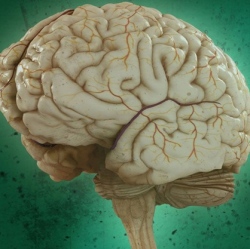
A few years ago, researchers from Germany and Japan were able to simulate one percent of human brain activity for a second. It took the processing power of one of the world’s most powerful supercomputers. Hands down, the human brain is by far the most powerful, efficient computer ever.
So what if we could harness the power of the human brain by using actual brain cells to power the next generation of computers? As crazy as it sounds, that’s exactly what neuroscientist Osh Agabi is building. Koniku, Agabi’s startup, has developed a prototype 64-neuron silicon chip.
Their first application? A drone that can smell explosives. A bee can navigate incredibly well because of its powerful ability to detect and interpret smells. Agabi was fascinated by this and wondered, “What if we could extract just the part responsible for that in the bee and put it in a drone? Suddenly we have a drone which has a sense of smell which equals that of bee.”
Such a drone would be able to smell bombs several kilometers away, says Agabi. It could also be used for surveying farmland, refineries, manufacturing plants, anything where health and safety can be measured by an acute sense of smell. There are no silicon devices which are able to give us the level of sensitivity that we find in biology.
To create their first working prototype, Agabi and his team had to solve three big problems. They had to learn to:
Structure neurons the same way they are structured in our brains
Read and write information in single neurons
Create an environment to keep the neurons stable
Using induced pluripotent stem cell technology, a method in which adult cells (from the skin, for example) are genetically reprogrammed into a stem cell, any cell can be turned into a neuron. But what do you do once you have a living neuron? Like electronic components, live cells need a specific environment to be able to operate.
By creating a special shell for each neuron, the Koniku team is able to control the temperature and pH levels and can also send nutrients to the neurons to keep them alive. They are also able to control how the neurons communicate with each other in these shells.
An electrode under the shells enables information to be read and written into the neurons. Agabi describes the process like this, “We coat the electrodes with DNA and enriched protein which encourages the neurons to form an artificial tight junction with the electrodes. That way, we can read the information from the neurons. We can write the information into neurons using the same electrodes or using other means, e.g. light or chemical.”
Agabi believes that harnessing the power and efficiency of the human brain is the future of computing.“There are no practical limits to how large we can make our devices or how much we can engineer our neurons. I believe as intelligent computation goes, biology is the ultimate frontier.”
He’s not shy about his ambitions either, “We want to be the Intel of wetware…”
With 64 neurons, a drone can have a powerful sense of smell. What’s next? By Agabi’s approximations, a Koniku chip with….
500 neurons can power a driverless car
10,000 neurons enables real-time image processing, at the level of the human eye
100,000 neurons enables robotics with multiple sensory inputs
1 million neurons will give us a computer that can think for itself.
Now, think about this: there are 100,000 neurons in a piece of brain matter the size of a grain of sand.
It’s not hard to see the potential here, yet there are sure to be significant challenges along the way. There has been much work done in attempting to build a brain-inspired machine but that’s very different than actually using biological matter like live neurons for computing at scale.
As magnificent as our advances in technology are, biology is a far more advanced technology than anything ever created by man. It is only in striving to replicate biological processes that we understand how much we have to learn from nature’s billions of years of evolution.
